Sensory Garden Ideas for Schools: Fun and Engaging Spaces for Kids
Creating a sensory garden at school is a wonderful way to enrich students’ learning experiences. These gardens provide a unique environment where children can explore and develop their senses through interaction with nature. Whether you’re a teacher, parent, or school administrator, the benefits of sensory gardens are significant and can positively impact child development.
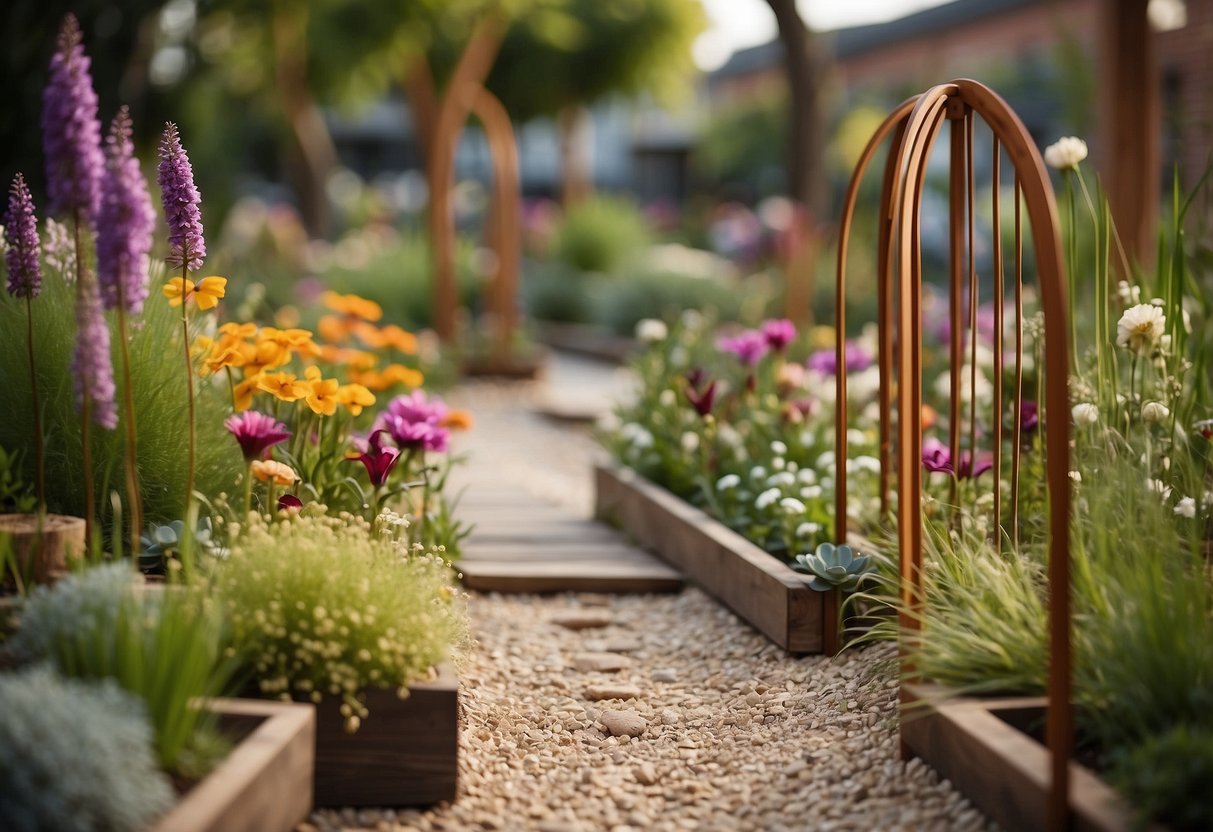
Why should you consider adding a sensory garden to your school? Sensory gardens are not just about aesthetics; they are educational tools that offer hands-on learning opportunities. These spaces can be tailored to meet the needs of all students, making them an inclusive and engaging addition to any school environment.
1) Sensory Pathways

A sensory pathway is a marked route that guides children through different movements. These paths can be on the ground or walls. They help kids burn energy and improve their motor skills.
Using colorful markings, you can make a path with steps, jumps, and balances. Each part of the pathway engages different body parts and brain activities.
Creating a sensory pathway at school can be fun and educational. Kids enjoy the activities while benefiting physically and mentally. For ideas, check out this resource on sensory paths.
2) Water Play Areas

Water play areas are a fantastic addition to any sensory garden. Kids love the feel and sound of water.
You can install fountains, mini waterfalls, or even a small stream. These features provide calming sounds and can be great for tactile sensations.
Adding a rainwater collection system can also teach kids about conservation while giving them an enjoyable sensory experience.
3) Herb Gardens
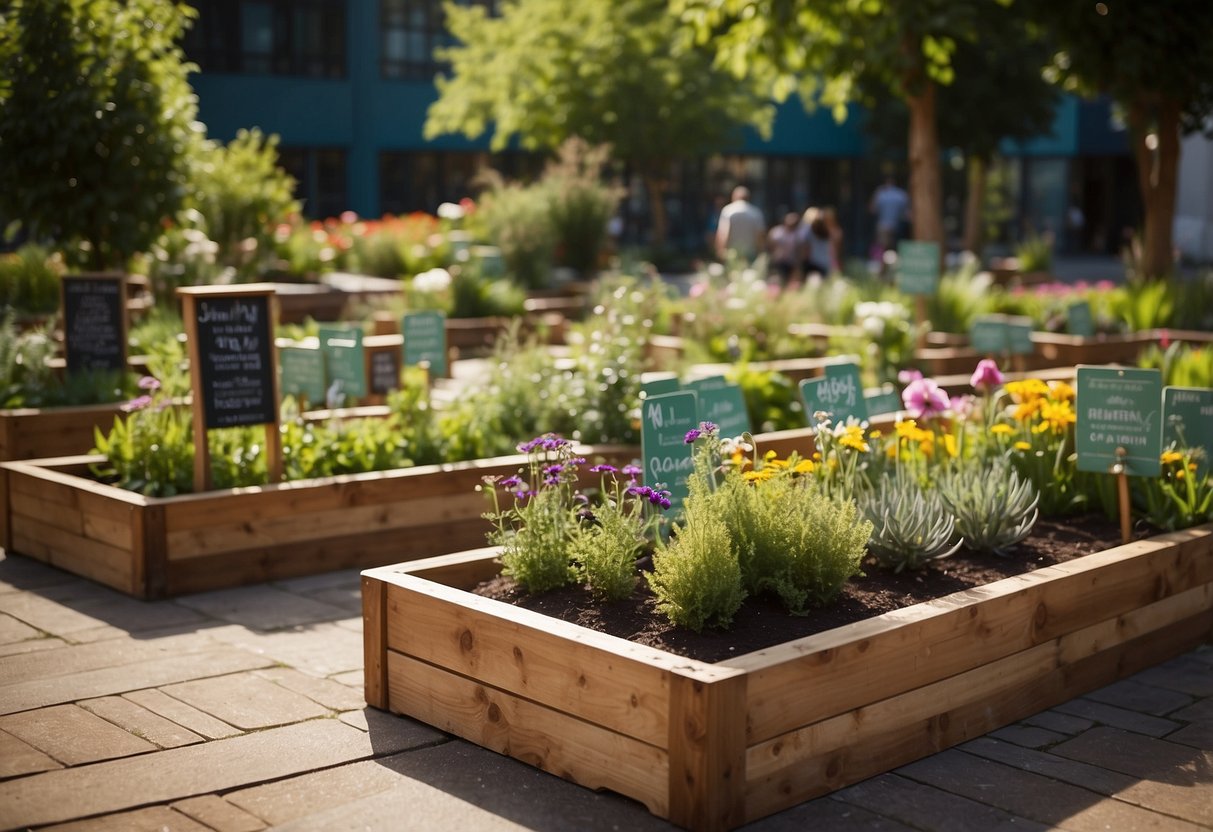
Herb gardens are a great addition to sensory gardens in schools. They are easy to grow and maintain. Plus, they offer many sensory benefits.
Lavender is a wonderful herb that produces a calming scent. It’s perfect for helping students relax. Lemon balm is another great choice. It can help improve focus and concentration.
You can also include other herbs like mint and basil. These plants have distinct scents and can be used in school activities. Your students will love exploring the smells and textures.
Make sure to label each herb clearly. This helps students learn and identify different plants.
4) Sound Panels
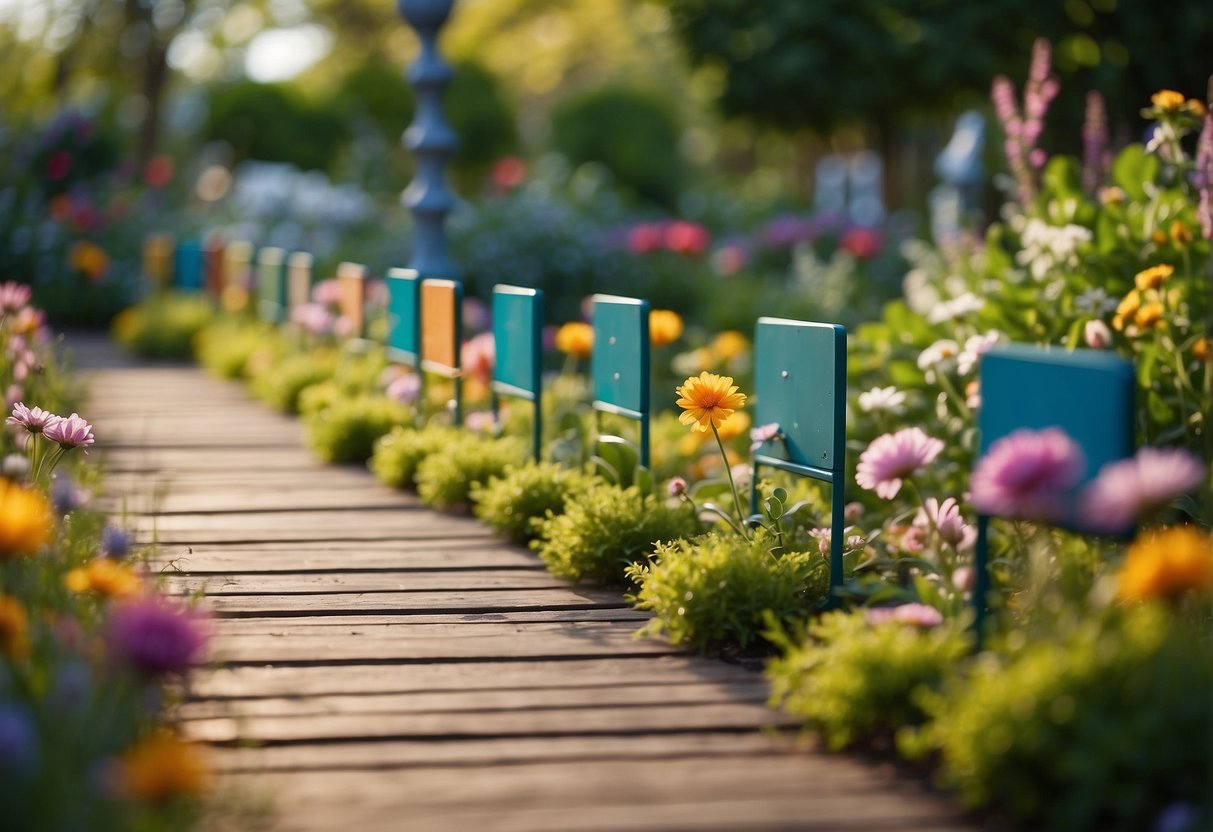
Sound panels can add an interactive element to your sensory garden. These panels often include instruments like drums, chimes, and chains, which produce different sounds when touched.
You can place sound panels at various heights to ensure all children can reach them. This promotes inclusion and makes the garden more engaging for everyone.
Sound panels can also be used to teach rhythm and musical concepts, turning playtime into a learning experience. Check out some ideas for sound panels here.
5) Textured Walls

Adding textured walls to a sensory garden can be a fun and engaging experience for kids. You can use different materials like bricks, stones, and wooden panels to create a variety of tactile surfaces.
These walls can help children explore different textures through touch, making the garden more interactive and stimulating.
You might also consider painting sections of the wall with chalkboard paint. This allows kids to draw and write, adding a creative element to the tactile experience. Textured walls can become a favorite spot in your sensory garden.
6) Wind Chimes

Wind chimes can greatly enhance a sensory garden. They offer soothing sounds that help create a calming atmosphere. You can choose from different materials like metal, bamboo, or shells to produce varied tones.
Hang wind chimes at differing heights to catch the breeze. This also adds an element of discovery for students, who can explore the different sounds made by each chime. Using wind chimes can also help children with sensory processing by providing gentle, rhythmic auditory stimulation.
7) Sand Pits

Sand pits are a fantastic addition to any sensory garden. They offer endless opportunities for imaginative play and sensory experiences.
Kids can dig, build, and create with sand, helping develop their fine and gross motor skills.
Try adding tools like shovels, buckets, and molds to enhance the fun. A sand pit encourages hands-on learning and creativity.
8) Outdoor Classrooms
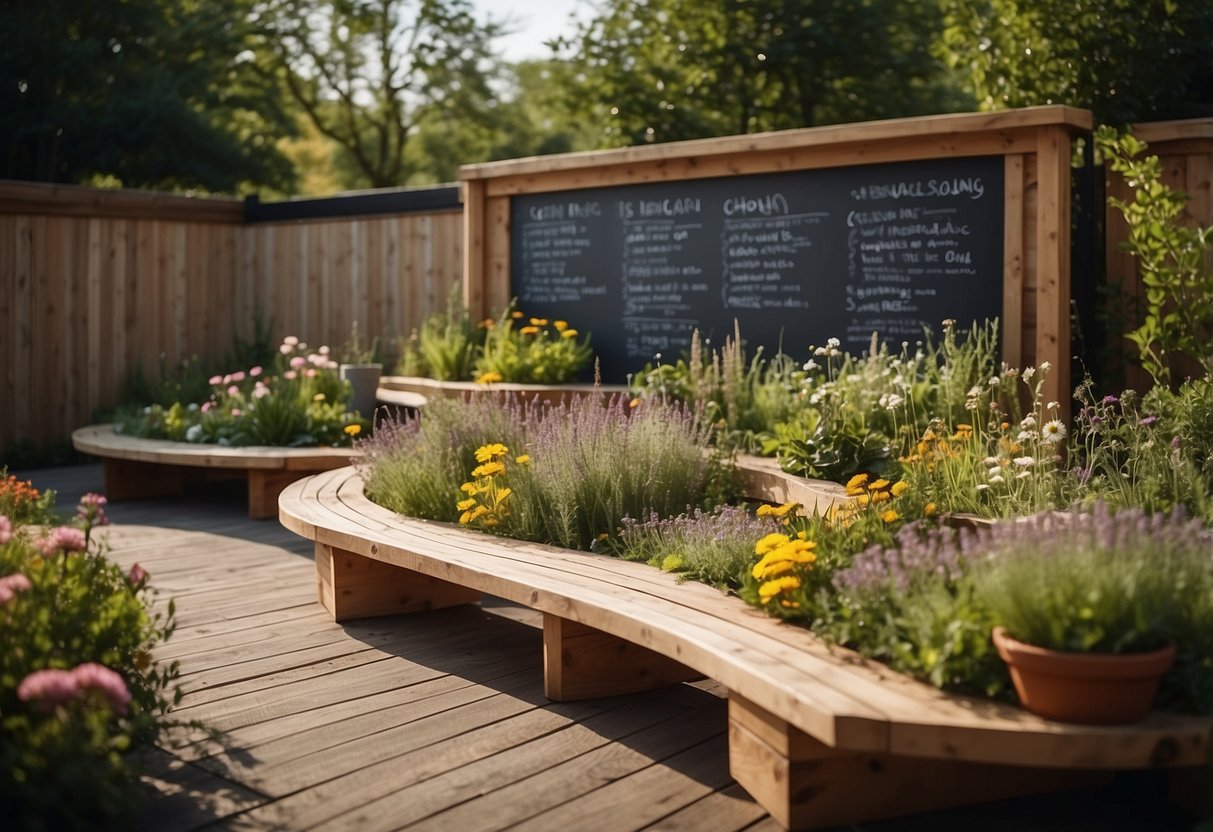
Creating outdoor classrooms can transform the way you teach. These spaces offer a fresh environment where students can engage with nature while learning.
You can use benches, logs, or even picnic tables to create seating areas. This setup encourages interactive and hands-on activities.
Incorporate elements like a chalkboard secured to a tree or a portable whiteboard. This way, traditional lessons can be easily adapted to the outdoors.
9) Butterfly Gardens

Creating a butterfly garden in your school is a fantastic way to connect students with nature. You can start by choosing an open, sunny area with at least 6 hours of sunlight.
Plant a mix of vegetation and wildflowers to attract butterflies. Plants like cuckooflower, hairy vetch, and red clover work well.
Avoid using insecticides to keep it safe for butterflies. Having an adult monitor the garden can help ensure its success.
10) Vegetable Plots
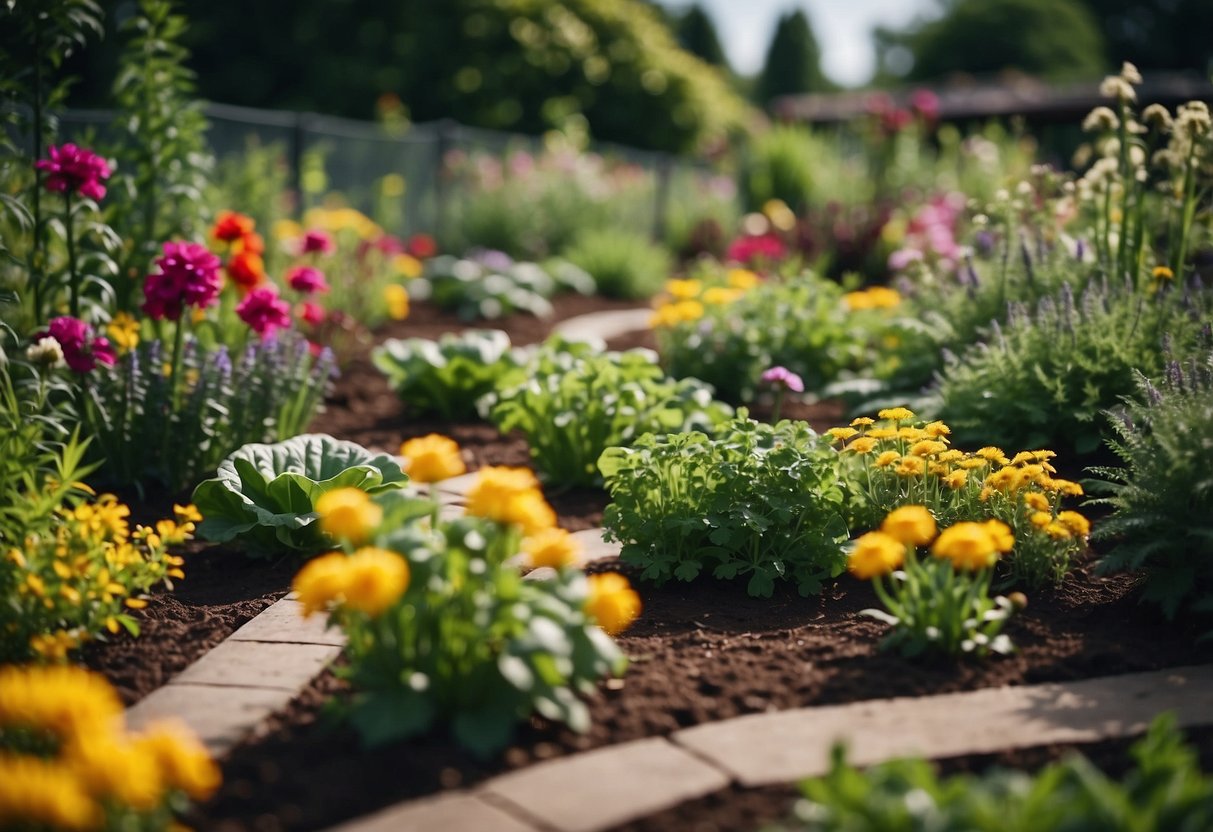
You can add vegetable plots to your sensory garden. Kids will love growing and tasting veggies.
Choose plants that are easy to grow. Tomatoes, cucumbers, and lettuce are good choices.
Kids can learn about planting, watering, and harvesting. This hands-on activity makes learning fun.
Understanding Sensory Gardens
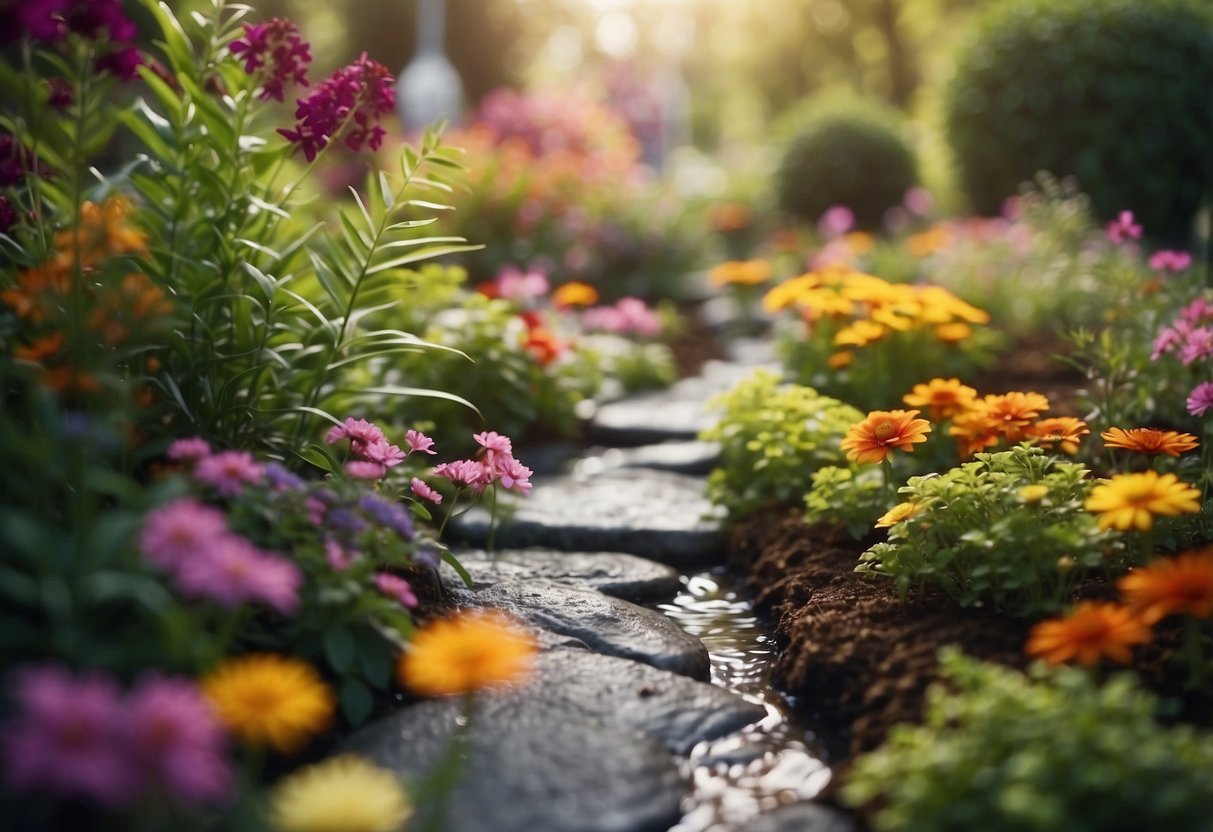
Sensory gardens are designed to engage all five senses through a variety of plants and accessories. They aim to enhance students’ learning experiences and support their emotional and physical development.
Benefits for Students
A sensory garden can improve students’ mental health and emotional well-being. The exposure to different smells, textures, and sounds helps children with sensory processing disorders, such as autism. Such gardens are also beneficial for reducing anxiety and stress. For instance, aromatic plants like lavender can help calm the mind.
Hands-on activities in the garden encourage children to explore their environment. This exploration can improve physical coordination and motor skills. Additionally, students get a chance to enjoy the outdoors, which is crucial for their physical health. You will notice real changes in how kids interact with their surroundings.
Key Elements of Sensory Gardens
A sensory garden should incorporate a variety of elements to engage the senses. Include aromatic plants like lemon balm and lavender that stimulate smell. Brightly colored flowers and mirrors enhance visual appeal and can be placed in strategic locations.
Textural plants like lamb’s ear and grasses are great for touch. Create auditory experiences with wind chimes and rainwater collection systems. Choose plants like herbs for taste, allowing students to safely explore flavors. These elements not only make the garden more engaging but also educational, offering numerous learning opportunities.
Schools can use these elements to create a rich, interactive environment. The setup does not require a lot of space, making it feasible even for smaller school grounds. By focusing on these key elements, you create a dynamic and therapeutic outdoor learning area.
Designing a Sensory Garden

When designing a sensory garden, it’s important to choose the right plants and incorporate different textures to engage all the senses. This approach helps children interact with nature in a meaningful and educational way.
Choosing the Right Plants
Selecting the right plants is crucial for a sensory garden. Different plants can stimulate various senses like sight, smell, taste, touch, and hearing.
- Sight: Brightly colored flowers like sunflowers or marigolds attract attention.
- Smell: Aromatic plants such as lavender and rosemary can create a calming atmosphere and improve focus. Lavender, for example, produces a calming scent that can help reduce anxiety and improve sleep quality.
- Taste: Edible plants like cherry tomatoes or strawberries allow children to taste what they grow. Group these plants together to avoid confusion about what can be eaten.
- Touch: Plants with interesting textures such as lamb’s ear or moss can engage the sense of touch. Avoid plants with thorns or irritative foliage to ensure safety.
- Hearing: Include grasses that rustle in the wind or plants that attract birds to add natural sounds to the garden.
Choosing a variety of plants ensures that all senses are engaged, making the garden a more immersive experience for children.
Incorporating Different Textures
Textures play a key role in a sensory garden, encouraging children to explore through touch.
- Soft: Plants like lamb’s ear have a soft, fuzzy texture that is pleasant to touch.
- Rough: Incorporate trees with rough bark, such as oaks, so children can feel the different textures.
- Smooth: Provide smooth surfaces with plants like ferns that have sleek foliage.
- Unique: Choose plants with unique textures like the rubbery leaves of a jade plant to offer different tactile experiences.
You can also use non-plant materials to add to the variety of textures. For instance, stepping stones with different surface finishes, gravel paths, or wooden benches can enhance tactile exploration.
By focusing on a range of textures, you create a rich sensory experience that encourages tactile learning and curiosity in children.







